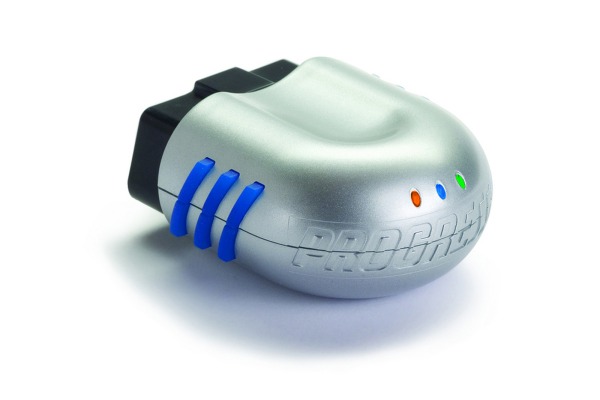
If you're finally ready to think about pay-as-you-drive car insurance, it's ready for you.
Over the past couple years, a majority of the country's largest auto insurance carriers and many smaller ones have begun offering pay-as-you-drive and other forms of use-based insurance or have pilot projects in the works. During the same time, every state insurance regulator in the country has approved at least a handful of the policies, and some many more.
Auto insurers set rates for use-based insurance (UBI) by monitoring your mileage, driving speed or related activities through electronic devices or smartphones and apps connected to your car's diagnostics port. That's different from traditional policies, whose rates are based on actuarial studies of historical data on demographics and risk factors such as driving records.
First offered more than a decade ago, UBI policies today cover as many as 3 million U.S. cars and trucks, according to insurance industry analysts. Progressive, which sells more UBI policies than any other auto insurer, says its Snapshot plan accounts for 30 percent of customers who buy its policies directly. From 2012-'13, Snapshot premium revenue grew 50 percent, to $1.5 billion, according to the company.
Policies are expected to become even more popular in the near future. Within five years, 20 percent of all U.S. vehicle insurance is expected to incorporate some form of UBI, according to a January 2014 report from the National Association of Insurance Commissioners' Center for Insurance Policy and Research. Forty-two percent of a representative sample of 1,046 U.S. drivers were "interested" or "very interested" in UBI plans, according to a February 2013 poll from market researcher Strategy Analytics.
"Marketing and discounts are two main reasons why it's growing," says Greg Basich, a senior analyst with Strategy Analytics' automotive practice.
Roadblocks
UBI hasn't fully arrived, however. While all signs point to more consumers giving the plans a spin, UBI policies still represent a tiny portion of the overall auto insurance market. Policies from Progressive, State Farm, Allstate, Esurance and others cover less than 2 percent of all vehicles on the road, according to industry watchers.
Privacy concerns are one of the biggest roadblocks. Drivers have been reluctant to let insurers place devices in their cars to track their mileage, says Michael Barry, a spokesman for the Insurance Information Institute, an industry group. Instances of credit card data breaches and government spy agencies monitoring cell phone communications have only added to people's sensitivities about what might become of their personal data.
"Every person has a different degree of how much privacy they want," says J. Robert Hunter, insurance director for the Consumer Federation of America. "Personally, I would want hard-braking data collected on me because I drive safely. But other people might not. Of course you have to trust [insurers] when they tell you what they're collecting."
Sharing Driving Info To Save
A major impetus pushing drivers to explore UBI is money. Specifically, they're interested in the chance to save by paying based on how much (or little) they drive. Typical rates are predicated on people driving 12,000 miles a year. Prove you only drive 6,000 or 7,000 and you may be in line for a premium rate reduction, says Barry, the Insurance Information Institute spokesman.
At Progressive, the average Snapshot customer receives a discount of 10-15 percent, a savings of about $150 a year, says Dave Pratt, the company's UBI general manager.
It's not a given that UBI policies cause anyone to drive less. Instead, insurance company representatives and industry analysts believe people who already drive under the annual average are most apt to switch. "People who have bad driving records aren't going to participate," says Strategy Analytics' Basich.
Telematics and Smartphones Ease the Way
The driving public's growing comfort level with onboard telematics systems for GPS, entertainment, safety and maintenance may help ease the way for UBI policies, according to industry experts.
Pay-as-you-drive plans also are benefiting from consumers' love affairs with smartphones and apps. First-generation UBI policies use pocket-size electronic meters plugged into a car's diagnostics port to collect and store data or transmit it in real time back to the insurer through telematics such as OnStar or Ford's Sync system. Newer offerings work with smartphone apps, sending the data to the insurer through Wifi connections. One of them is Drive Safe & Save with In-Drive, one of three UBI plans that State Farm offers.
Drivers in the market for UBI policies can research what's available on insurers' Web sites or by getting the data from state insurance regulators. States such as California strictly prohibit insurers from tracking anything but miles driven, while other states allow insurers to measure such activities as speed and braking. Some insurers offer introductory discounts on UBI plans to drivers who aren't already customers, adjusting them accordingly after a trial period.